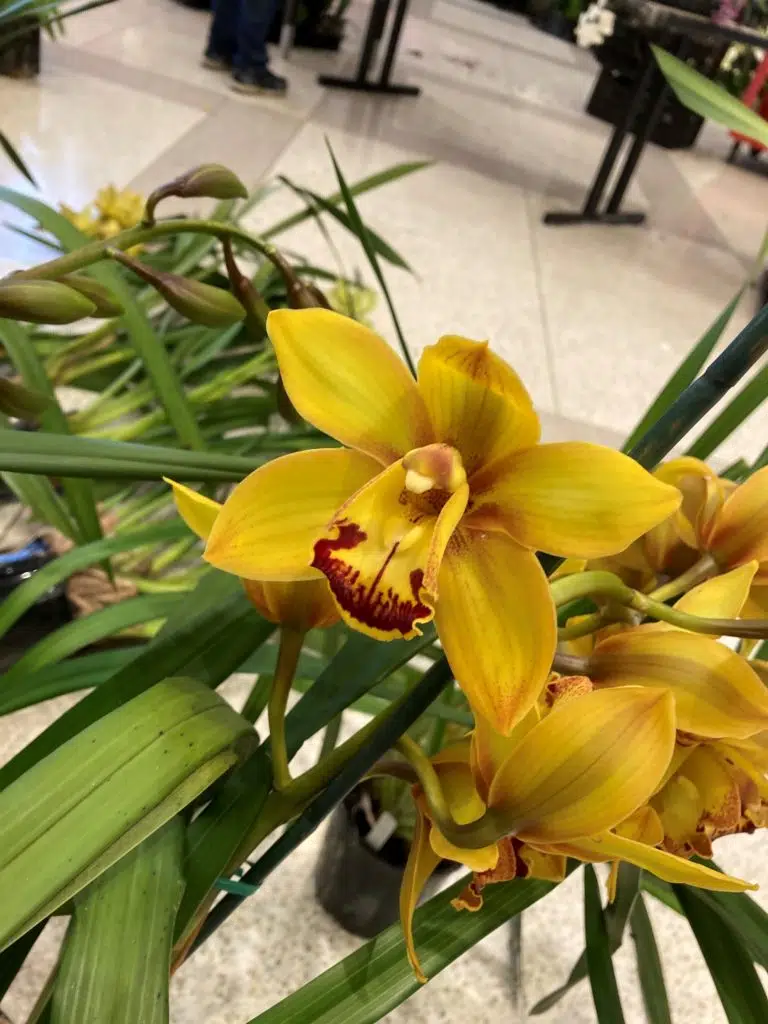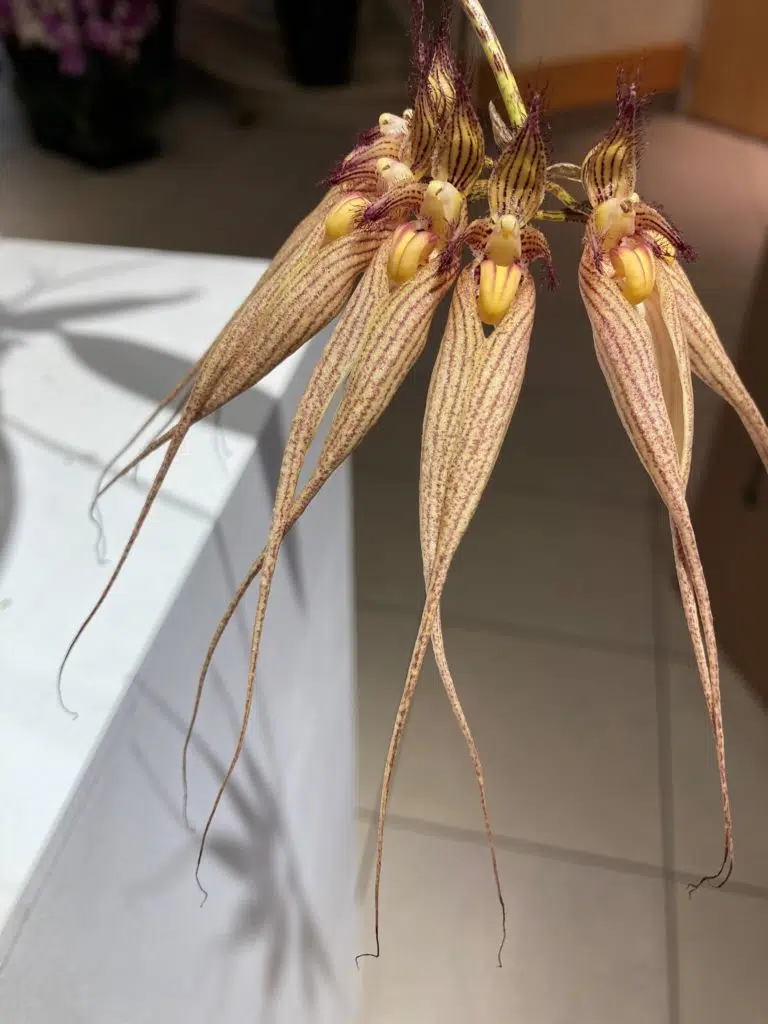
People love orchids. Their unique complexity yet open simplicity make them truly enchanting. Which is why, even though they can be tricky to maintain for the long term, they are the second most popular potted flowering plant in the United States (behind Poinsettias). But even though as a culture we love these plants, we don’t understand them very well. Which is why many people have a hard time getting an orchid to rebloom or even keeping one alive.

Orchids have what’s called flowering and vegetative phases throughout their lives. Neither phase is dictated by a specific amount of time, but rather the completion of certain steps. The flowering phase ends when the flowers fade and fall and then the juicy part begins, the vegetative phase. The vegetative stage is vital! Many times people believe they are having a hard time getting their orchid to flower when really the plant is having a hard time growing and therefore won’t even dream of wasting its energy flowering.
A properly completed vegetative phase includes the growth of a new set of leaves or pseudobulb and a couple (if not more) new roots. If the new roots stop growing with dried brown tips, it means the plant is too dry which will lead to less or possibly smaller blooms when the flowering stage begins. The shape and size of the new leaves is also an indicator of the plant’s health and, therefore, its ability to rebloom. Long narrow and floppy leaves mean the plant is not getting enough light and red or purple tinged leaves mean it is receiving too much light. Without the proper amount of light, no orchid will rebloom so watch your leaves for signs of distress.
What orchids don’t have an indicator for is their nutrient needs. Like any plant, they need minerals and nutrients to grow, which translates to fertilizers. A slightly acidic fertilizer with balanced NPK ratio is what orchids prefer. I have found that my orchids do better with weaker fertilizer dose applied more frequently, biweekly or so.

Like all plants orchids also need proper watering. Different species of orchids need different amounts of water but almost all would like watering about once a week. To properly water an orchid simply remove the plastic grow pot from your decorative pot, dunk it in a sink or bowl full of water for a few minutes, then remove and let drain before putting it back in the decorative container. This process helps make sure the orchids get a good drink without overwatering. No ice cubes needed!
Then, when all of the physical requirements have been met, the plants still need something to tell them that it is time to flower! For many orchids, including the common Phalaenopsis types, cooler nighttime temperatures (in the 50s) do that. So if you’re doing everything to encourage flowering with no luck, try putting your orchid in a drafty spot or on a (not too bright) windowsill that has more of a temperature differential.

Come see all of the flowering orchids at the Cleveland Botanical Garden’s Orchids Forever open through March 13th .

Caroline Watson
Horticulturist
Caroline has been practicing her craft at the botanical garden for three years. She comes to us with a biology degree from Ohio Wesleyan University and experience designing with flowers. And these skills are on beautiful display throughout the Terrace and Restorative Gardens. Caroline also has a special interest in the intricate traditional pruning methods she applies to the Japanese Garden. That’s enough to keep her busy—but she’s never too busy talk gardening with you!













